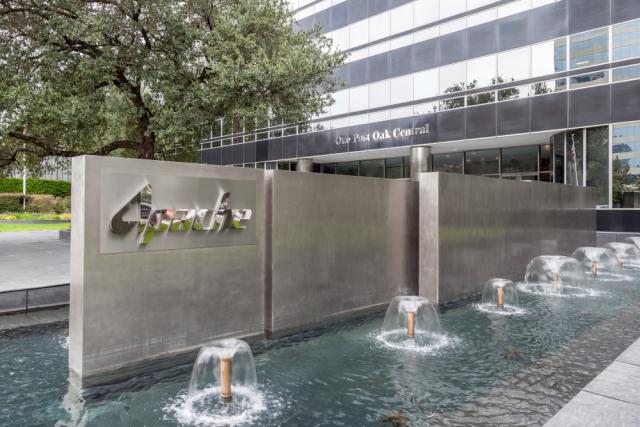
Source: JHVE Photo/Shutterstock.com
Houston-based Apache Corp. delivered an update Dec. 2 on one of the oil and gas industry’s most-watched exploration wells, offshore Suriname, saying it is testing two play types and plans to drill deeper to test a third.
But there was no word yet on whether the Maka Central-1 well had encountered hydrocarbons—apparently disappointing Wall Street as company shares dropped about 13% by midday.
“So, sounds like we wait until January, given the release essentially extends activity on the well for a couple of months,” Paul Sankey, managing director of Mizuho Group, said in a note to clients. “This is hardly the champagne cork moment that was potentially at play here... but then again nor is this firmly a dry hole.”
Drilled by the Noble Sam Croft about seven miles from the Suriname-Guyana maritime border, the well began operations in late September with drilling expected to last 30 to 60 days. Apache said it decided to test two distinct Upper Cretaceous play types after reaching a depth of about 6,200 m (20,341 ft).
“Following the completion of these tests, the company will set casing, make equipment modifications to the rig, and resume drilling in mid-December to evaluate a third play type in the Cretaceous,” Apache said in the release. “The new target depth of the well is approximately 6,900 meters. Following the drilling operations, further testing and evaluation will be conducted as appropriate.”
Industry players are closely watching exploration activities offshore Suriname, the small South American east of Guyana. Apache’s 100%-operated Maka Central-1 well is being drilled in Block 58, which borders the prolific Stabroek Block, offshore Guyana, where Exxon Mobil Corp. and partners have made 14 discoveries with an estimated recoverable resource of more than 6 billion barrels of oil equivalent.
Apache’s acreage is near Exxon Mobil’s Haimara gas and condensate discovery, which is in the southeast section of the Stabroek Block. Haimara was drilled to a depth of 5,575 m (18,289 ft).
While oil and gas companies, including Tullow Oil and its partners on the Orinduik Block, have struck oil on the Guyana side of the Guyana-Suriname Basin, there has been little success and exploration offshore on the Suriname side. Tullow’s Jethro-1 and Joe-1 discoveries, however, are heavy oil with high sulfur content.
Kosmos Energy Ltd. drilled the Anapai-1A exploration well to test Cretaceous structural/stratigraphic trap in Block 45 offshore Suriname in 2018 but struck out. A year earlier Apache failed to hit commercial volumes of hydrocarbons with the Kolibri-1 well in Block 53.
Maka Central-1 is the first of three wells committed by Apache on Block. 58.
Apache said on Dec. 2 it will provide more information on Maka Central-1 “when the company is prepared to characterize the results.”
Following the news, analysts at Bernstein spoke to the investment implications of the update.
“Announcing a third target suddenly isn’t great practice [feels reactionary vs. preparatory] but is plausible with either a discovery or dry hole,” Bernstein said. “Deepening a well is plausible with either a dry hole or discovery above.”
But the lack of details is “consistent with Apache’s overall approach to this program,” analysts said, adding “We continue to believe the region is gas prone.”
A major discovery offshore Suriname could be a win for Apache, which like its peers have struggled to combat weak oil and gas prices that have impacted profit-making potential. In late October, the company said it started reorganizing to save costs. Its senior vice president of worldwide exploration resigned in October. And, the company also reduced drilling in its high-profile Alpine High play in the Permian’s Delaware sub-basin.
Speaking to analysts on Oct. 31 on the company’s third-quarter 2019, Apache CEO John Christmann said there are seven different play types on Block 58. He later addressed how success or lack thereof offshore Suriname could impact the company’s capital allocation strategy. Apache has said it is open to bringing in a partner offshore Suriname.
“We feel good about the portfolio with or without Suriname,” he said, pointing out the company’s optionality given its unconventional inventory and international assets. “Obviously, Suriname offers a new playground for us. We feel good about the inventory and feel good about the direction of the company.”
Recommended Reading
NAPE: Chevron’s Chris Powers Talks Traditional Oil, Gas Role in CCUS
2024-02-12 - Policy, innovation and partnership are among the areas needed to help grow the emerging CCUS sector, a Chevron executive said.
E&P Highlights: Jan. 29, 2024
2024-01-29 - Here’s a roundup of the latest E&P headlines, including activity at the Ichthys Field offshore Australia and new contract awards.
Seadrill Awarded $97.5 Million in Drillship Contracts
2024-01-30 - Seadrill will also resume management services for its West Auriga drillship earlier than anticipated.
Oceaneering Won $200MM in Manufactured Products Contracts in Q4 2023
2024-02-05 - The revenues from Oceaneering International’s manufactured products contracts range in value from less than $10 million to greater than $100 million.
E&P Highlights: Feb. 5, 2024
2024-02-05 - Here’s a roundup of the latest E&P headlines, including an update on Enauta’s Atlanta Phase 1 project.






